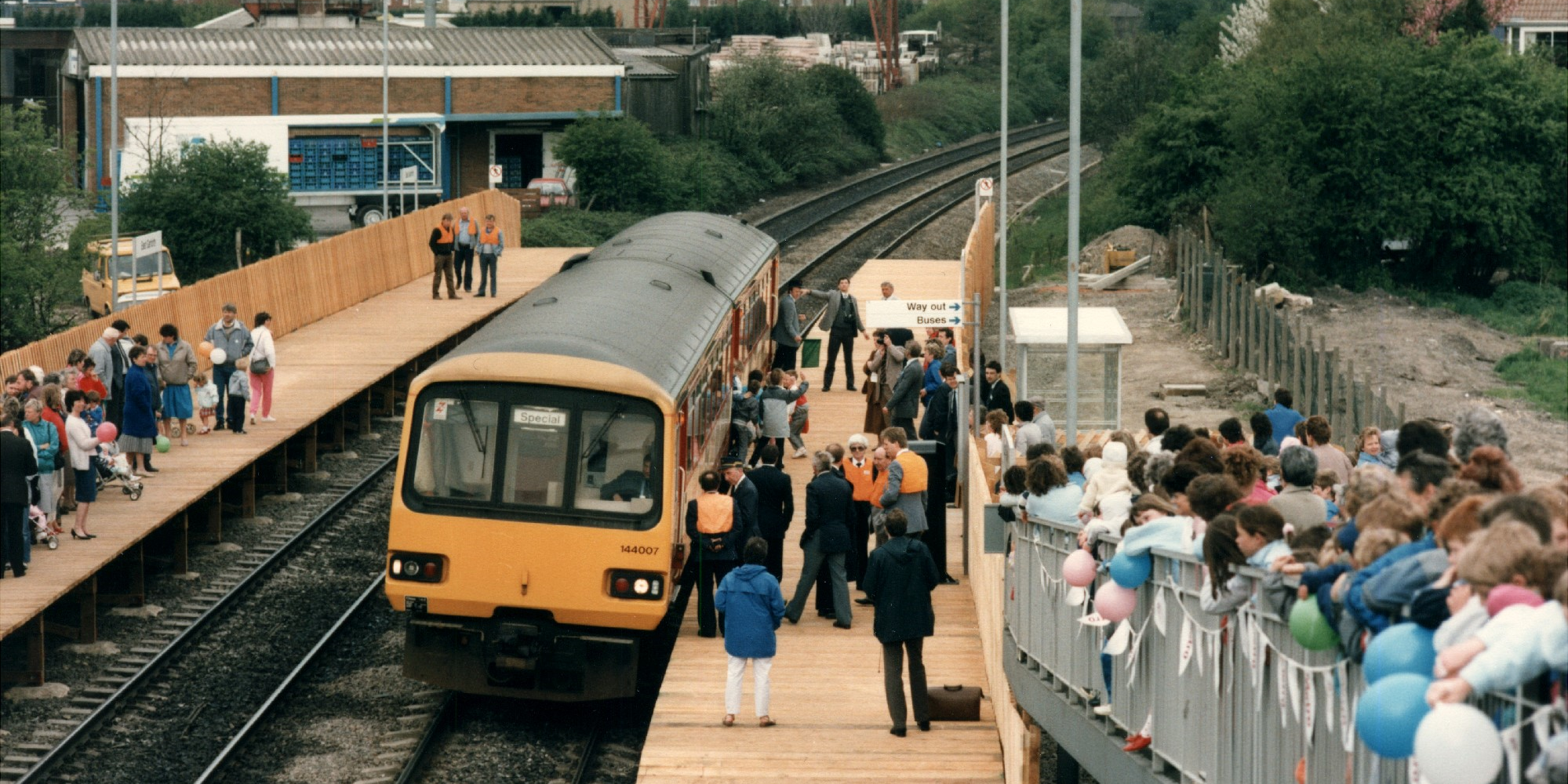A reader1 asks: “Is it really going to cost £24m to build a new rail station at Haxby?”
The short answer is yes. This isn’t one of those jobs where you get three quotes and check out previous reviews on Checkatrader.
The longer answer is no, but for complicated, historical reasons that necessitate the writing of a post. It’s focused on Yorkshire – sorry if you’re not local.
We often think of the Beeching closures as the axe, but actually, in Yorkshire, more stations were closed by British Railways between 1948 and the end of 1963 than after the first of the Beeching closures from 8 January 1964.
Indeed, the first reopening was Baildon – in 1973.
Metroplans

Ten years later, the first of what could be described as ‘modern’ re-openings took place, in places such as Bramley, Slaithwaite, East Garforth (pictured) and Deighton. These stations were modest affairs; two simple, wooden platforms with a bus shelter, some poster cases and a SaverStrip machine.
Many of these were on the sites of former stations (some closed long before Beeching); all benefitted from being near a road bridge or underpass, making it easy to access either platform. These were the ‘low-hanging fruit’ costing iro £125,000 (around £500k today).
Stations were also opened on previously freight-only lines; Streethouse, Featherstone and Pontefract Tanshelf reopened in 1992, Brighouse in 2000.
By this time, the focus was more on rail stations as park and ride sides to relieve congestion. Just because you had a station before, doesn’t mean you should have one now. Glasshoughton serves this purpose, though it was never really designed to. Steeton and Silsden Station is having a multi-storey car park built, as the car park has been extended several times since it opened. It’s handily the first stop in ‘Metroland’, which means it works out cheaper to drive there and buy a ticket than to catch the same train from Skipton or Cononley, just over the border.
Expansion
By this time, stations were a bit more solid. Platforms were concrete rather than wooden, which pushed up the costs, as did the extra land and construction for parking spaces. Long-line public address systems, customer information screen and ticket machines were installed, all of which needed power and data connections.
Accessibility also became more important. We think of ramps as going down to platforms, but people have to get up them as well. Steeper slopes needed replacing, with flat refuges provided every 20 metres or so. If not slopes, then lifts, which also cost a bit to source, install and maintain.
The two stations after Glasshoughton were Apperley Bridge and Kirkstall Forge. Together they cost £16.5m. Apperley Bridge doesn’t have lifts, but it does have a long access road leading to a large (and full) car park. The slope down to the Leeds platform was within tolerance when built; but the rules have changed since, and it is now not compliant and will need remediating.
Next up; Low Moor. Lifts, parking, access road, built over former mine workings. A cool £10.8m. Those last three were mine, in whole or in part, so I’m very familiar with them.
And that was it until Elland, White Rose, Thorpe Park and Leeds Bradford Airport Parkway were proposed in the 2020s. Elland should have opened in 2000 with Brighouse, but was deferred, and has been again. Thorpe Park is dependent on Transpennine Route Upgrade work, and Leeds Bradford (etc) station has dropped off the map somewhat. The projected cost was £42m and it would have looked stunning. And been a bit pointless (but that’s me editorialising). It’s all gone quiet over there, as they say.
Work on White Rose has been unexpectedly paused due to rising costs, which had reached the £26.5m allocated to it. Being on an embankment doesn’t help. And the car park, lifts, etc.
Rolling, rolling rolling… stock
Plus, trains are longer now.
Back in the day, the pre-eminent rolling stock was the Pacer. Each carriage was around 15m long, so you could get away with 60m platforms in some rural places. When the Sprinters and Super Sprinters came in they were around 23m, so 100m platforms became the norm.
White Rose is on the trans-Pennine route (as is Haxby). Platforms need to be able to take a 2×3-car 185 (= 138m) or a 5-car 802 (= 130m), and have enough room to expand. So, platforms are almost half as long again, plus canopies for passenger cover.
Then you’ve got the inescapable costs due to Brexit, the war in Ukraine, financial crises left, right and centre… it all adds up.
And, even those cheaper stations from a bygone era need extending and updating. You wouldn’t build Bramley now the way it was built then.
TL;DR
Will Haxby cost £24m?
No. I think it will cost more than that.
Bonus clip: from the official opening of Apperley Bridge, with yours truly making a cameo appearance.
- Okay. It was a journalist, and I thought it might make a good post. [↩]
